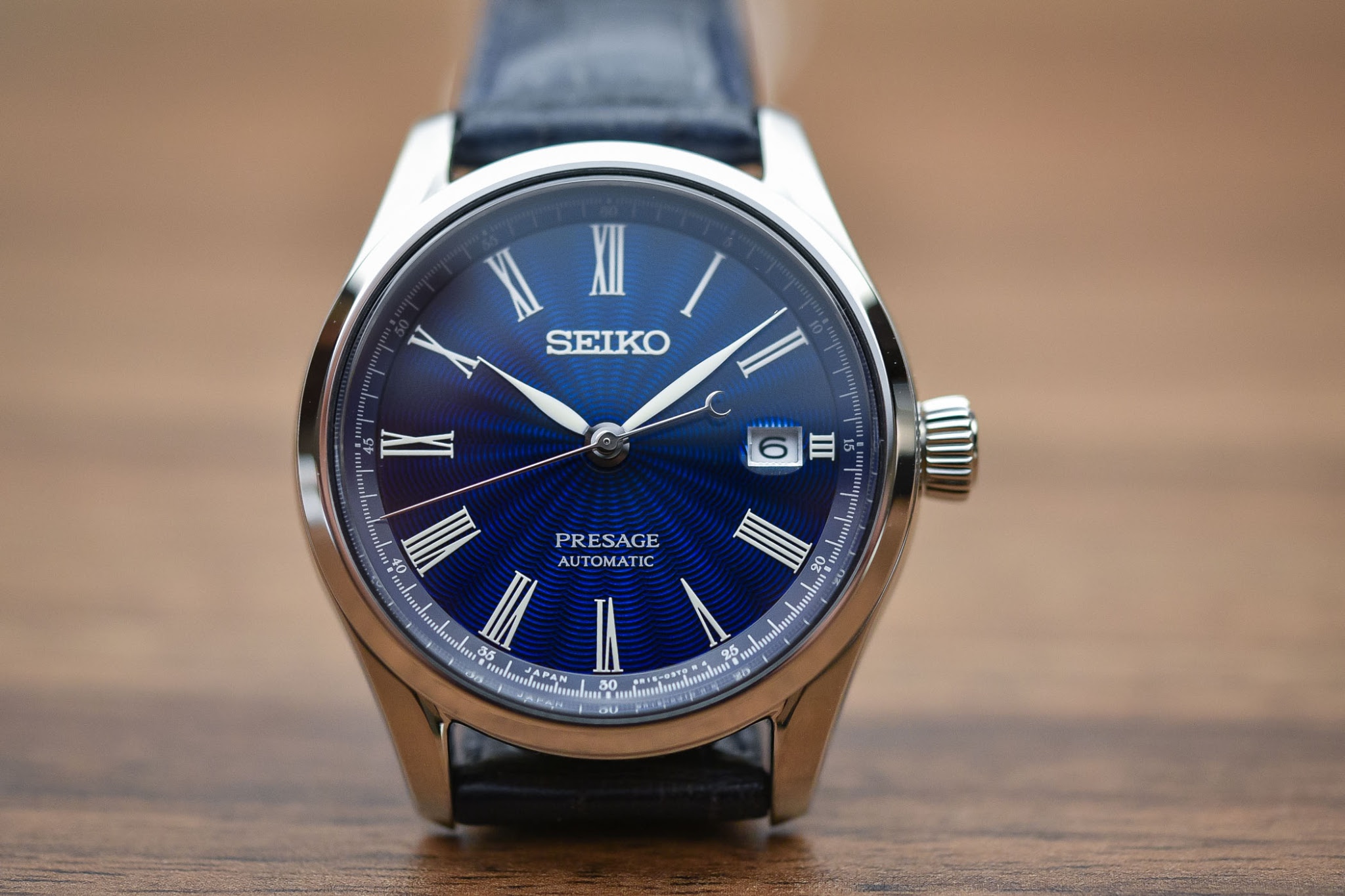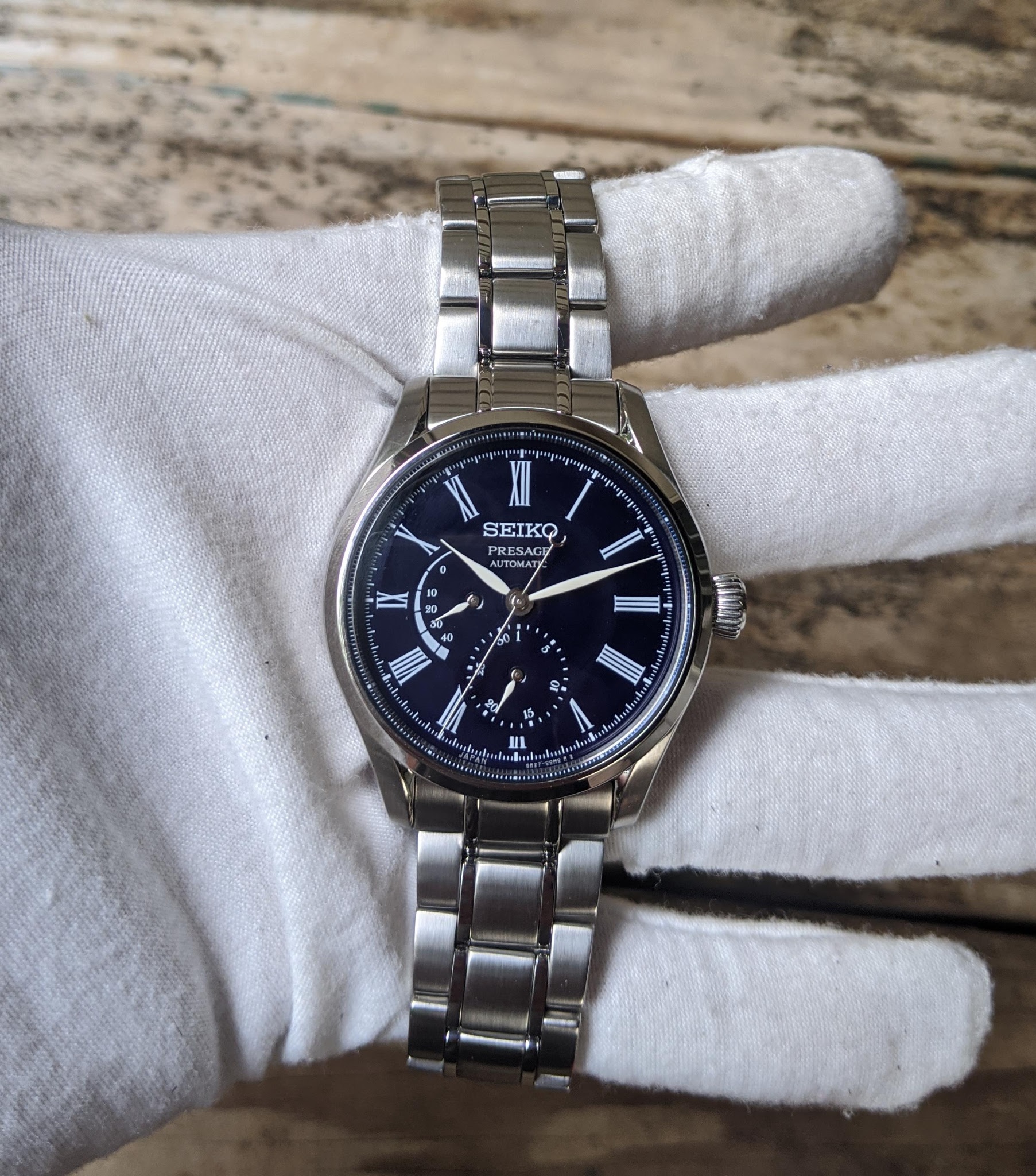360°?

So, why did SEIKO divide the seconds indices into 6ths?

What's the VPH of the movement?
The 6R15 runs at 21600 beats per hour which is 6 beats per second. Each beat is one tick of the seconds hand.
Martin
I owned a military spec stop watch with the same problem - the second hand never seemed to hit the marker for decimal fractions of a second.
One sixth would have been better than stopping half way between the markers
The Polerouter also had a similar feature in that the lines on the chapter ring are 1/4 second apart which matches up with each movement of the second hand.
And I hope Mr Curta doesn't mind me using his pic as it's one of the best Polerouter pics that shows the chapter ring.
Last edited by Caruso; 8th June 2022 at 22:42.



And here's the quarter-second variant ...



As aside to this. The Omega Speedmaster dial on both Pre and Post Moon versions have had 5 divisions per second (4 little one big) all the way from 1957 to 2020 when the 1861 movement was phased out. This made perfect sense since the original 321 is a 18k vph movement (2.5Hz, 5 ticks per second), so when you are for instance timing your re-entry burnyou have split second precision to 0.2 seconds. Only problem is when they 'upgraded' to the 861 movement in 1969 they raised the beat rate to 21,600 (3Hz) which had the unintended consequence that the chrono hand never hits the intermediate hash marks but only the full second as it ticked in 1/6 of a second increments. Thus from 1969 the Speedmaster wasn't any longer a precision timing instrument (if it ever was).
Starting with some of the LE models a few years back and for the latest Moonwatch with the 3861 movement Omega have 'fixed' the problem by dropping to 2 intermediate hashes which means the hand hits the mark every other tick. There have been other beat rates used in Pro cases and there too they have changed the amount of indices to allow for this, the 4Hz (8 tick) Broad arrow watches with their superior 3303 and 3313 movements use 3 intermediate hashes so the hand again hits every other tick.
Here is a pic borrowed from Fratello that shows what I mean, count the indices, the 2021 watch is on the LHS:

Last edited by Padders; 9th June 2022 at 10:43.
Your original question was "why did SEIKO divide the seconds indices into 6ths?" not "why did SEIKO divide the seconds indices into further sub-divisions?".
Where sub-divisions are included, it makes sense to correlate their number with the frequency at which the movement runs.
Martin

For the perfect boiled egg!

But why were they - 6ths on this model, quarters on another and, apparently thirds on an Omega - included, without the makers telling the buyers?
I posted the same "Why did SEIKO divide ..." question on TZ and WatchProSite. On the latter, it's attracted 1,000+ views in 24 hours. This suggests strongly that people looked because they didn't know the answer.
Whilst accepting the logic of what you say, that "... it makes sense to correlate their number with the frequency at which the movement runs", it seems to make little sense to include a feature on a dial without advertising and perhaps even less sense to put it there in the first place.
